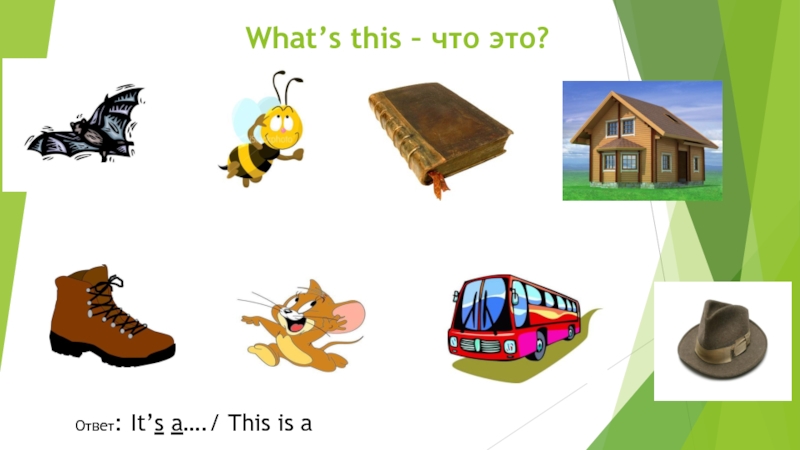- Главная
- Разное
- Образование
- Спорт
- Естествознание
- Природоведение
- Религиоведение
- Французский язык
- Черчение
- Английский язык
- Астрономия
- Алгебра
- Биология
- География
- Геометрия
- Детские презентации
- Информатика
- История
- Литература
- Математика
- Музыка
- МХК
- Немецкий язык
- ОБЖ
- Обществознание
- Окружающий мир
- Педагогика
- Русский язык
- Технология
- Физика
- Философия
- Химия
- Шаблоны, фоны, картинки для презентаций
- Экология
- Экономика
Презентация, доклад по английскому языку Из истории Англии
Содержание
- 1. Презентация по английскому языку Из истории Англии
- 2. How did English history start?About three thousand
- 3. One of the mysterious monuments
- 4. In the 7th century BC the Iberians
- 5. Romans invade Britain The Roman Empire became
- 6. Слайд 6
- 7. The Anglo-Saxon Conquest of Britain The Celts
- 8. Слайд 8
- 9. Danish invaders in England. Vikings on
- 10. Слайд 10
- 11. The Norman Conquest of England To make
- 12. No matter how hard the people of
- 13. Слайд 13
- 14. Britain in the Middle AgesDuring the Middle
- 15. The war that was within the country
- 16. Henry VIII, a member of the dynasty,
- 17. Mary, Henry’s daughter, was called Bloody Mary.
- 18. Another Henry’s daughter Elizabeth I was the
- 19. In the 17th century Britain was under
- 20. The rise and fall of the British
- 21. In the 19th century the United States
- 22. Слайд 22
- 23. Robin Hood One of the legendary heroes
- 24. Many Saxons who could not stand the
How did English history start?About three thousand years Before Christ (BC) [bI'fɔ:kraIst] people came from the north of Spain (the Iberian Peninsula) to many parts of Europe including the British Isles.
Слайд 1From history of Great Britain. British legends
Разработала:
преподаватель английского языка
Киселева Е.Н.
Слайд 2How did English history start?
About three thousand years
Before Christ (BC)
[bI'fɔ:kraIst] people came
from the north of Spain
(the Iberian Peninsula) to
many parts of Europe
including the British Isles.
Слайд 3 One of the mysterious monuments of prehistoric Britain is
Stonehenge. It was constructed before 2000 BC and is a trace of the ancestors of the British people. Stonehenge is a circle of huge stone slabs. It is situated in the southern part of England.
Слайд 4In the 7th century BC the Iberians faced a great problem
because the British Isles were invaded by the Celts. The Celts may originally have come from eastern and central Europe.
Celtic people lived in tribes. Each tribe was ruled by its own queen or king who represented a warrior class. The priests, called druids, were important members of Celtic tribes. These druids could not read or write but they memorized all the religious teaching, the tribal laws, history, medicine and natural philosophy. Celtic tribes were represented by the Picts, the Scots and the Britons.
Celtic people lived in tribes. Each tribe was ruled by its own queen or king who represented a warrior class. The priests, called druids, were important members of Celtic tribes. These druids could not read or write but they memorized all the religious teaching, the tribal laws, history, medicine and natural philosophy. Celtic tribes were represented by the Picts, the Scots and the Britons.
Слайд 5Romans invade Britain
The Roman Empire became extremely strong in the
1st century BC. This Empire was the last and greatest civilization of the ancient world.
At that time two thousand years ago the Celtic people were still living in tribes. And Roman society, of course, was very much different from the Celts in many ways.
Romans first attacked Britain in 55–54 BC under Julius Caesar. But they really conquered Britain in the 1st century Anno Domini (AD) ['ænəu 'dɔmInaI], in 43 AD when the Roman Emperor Claudius decided to make Britain part of the Roman Empire. And Britain became one of its numerous provinces. They forced the population to pay tribute.
At that time two thousand years ago the Celtic people were still living in tribes. And Roman society, of course, was very much different from the Celts in many ways.
Romans first attacked Britain in 55–54 BC under Julius Caesar. But they really conquered Britain in the 1st century Anno Domini (AD) ['ænəu 'dɔmInaI], in 43 AD when the Roman Emperor Claudius decided to make Britain part of the Roman Empire. And Britain became one of its numerous provinces. They forced the population to pay tribute.
Слайд 7The Anglo-Saxon Conquest of Britain
The Celts remained independent when the
Roman armies left Britain, but it did not last long.
Already in the 4th century Britain was raided by the Germanic tribes — the Angles, the Saxons and the Jutes. The tribes of Angles and Saxons came from the territory of modern Germany and Denmark. As for the Jutes, their tribe was smaller and they came from Juteland (modern northern Denmark).
All beautiful towns and buildings left by the Romans were destroyed by these barbaric people.
Of all three tribes, the Angles became the strongest. Later two tribes of the Angles and the Saxons united and were called Anglo-Saxons. These Anglo-Saxon people are the ancestors of the English.
They called their speech English and their country — England, that is "the Land of Angles".
The British Celts (the Britons) fought the raiders. But they took houses, fields and cattle from the Britons. So the Britons had to go to the mountains in the far West and settle there. The Saxons called that place "Weallas" or "Wales" meaning "the land of the foreigners". This part of Britain is called Wales now. Other Celts were driven into the lands in the North which became known as Scotland. So, Wales and the highlands of Scotland are inhabited by the oldest Scots called today "the Celtic fringe of the island".
Anglo-Saxons founded 10 separate kingdoms, the most powerful of which were Wessex, Sussex, Essex, Kent, East Anglia, Mercia and Northumbria. These seven are known as heptarchy ['hepta:kI] and they are now some of the counties of Great Britain.
Already in the 4th century Britain was raided by the Germanic tribes — the Angles, the Saxons and the Jutes. The tribes of Angles and Saxons came from the territory of modern Germany and Denmark. As for the Jutes, their tribe was smaller and they came from Juteland (modern northern Denmark).
All beautiful towns and buildings left by the Romans were destroyed by these barbaric people.
Of all three tribes, the Angles became the strongest. Later two tribes of the Angles and the Saxons united and were called Anglo-Saxons. These Anglo-Saxon people are the ancestors of the English.
They called their speech English and their country — England, that is "the Land of Angles".
The British Celts (the Britons) fought the raiders. But they took houses, fields and cattle from the Britons. So the Britons had to go to the mountains in the far West and settle there. The Saxons called that place "Weallas" or "Wales" meaning "the land of the foreigners". This part of Britain is called Wales now. Other Celts were driven into the lands in the North which became known as Scotland. So, Wales and the highlands of Scotland are inhabited by the oldest Scots called today "the Celtic fringe of the island".
Anglo-Saxons founded 10 separate kingdoms, the most powerful of which were Wessex, Sussex, Essex, Kent, East Anglia, Mercia and Northumbria. These seven are known as heptarchy ['hepta:kI] and they are now some of the counties of Great Britain.
Слайд 9Danish invaders in England.
Vikings on the British Isles
During the 8th
and the 9th centuries there were also Scandinavian invaders who wanted to conquer Britain. They were the Vikings. In 789 the Vikings began to attack the British Isles. They came from Norway, Sweden and Denmark and were called Norsemen.
They made York the capital of their kingdom. The Vikings brought their language, traditions,
art and built towns in
England. The English got
rid of the Vikings only in
the 10th century.
They made York the capital of their kingdom. The Vikings brought their language, traditions,
art and built towns in
England. The English got
rid of the Vikings only in
the 10th century.
Слайд 11The Norman Conquest of England
To make it clear we should
remember: before the Normans, there were four different peoples who invaded England.They were:
the Celts (the 6th century BC)
the Romans (the 1st century AD)
the Anglo-Saxons (the 5th century)
the Vikings (the end of the 8th century)
The Norman Conquest was the fifth invasion. And it is so well-known because it was the last invasion of Britain.
On October 14th, 1066, King William (Duke of Normandy) defeated the army of the English King Harold in the Battle of Hastings.
the Celts (the 6th century BC)
the Romans (the 1st century AD)
the Anglo-Saxons (the 5th century)
the Vikings (the end of the 8th century)
The Norman Conquest was the fifth invasion. And it is so well-known because it was the last invasion of Britain.
On October 14th, 1066, King William (Duke of Normandy) defeated the army of the English King Harold in the Battle of Hastings.
Слайд 12No matter how hard the people of England tried to defend
their country, the Normans were still much stronger than the Anglo-Saxons. When William, Duke of Normandy, was crowned, he became the King of England. He settled in London and was called William the Conqueror.
For 500 years the Normans were masters of Britain. London became a busy, rich and crowded city. The Normans did their best to make it look beautiful.
At that time the Tower of London was built on the Thames and it stands there still unchanged.
Westminster Abbey was finished and William was the first King to be crowned there. Since then all English kings were crowned in Westminster Abbey.
For 500 years the Normans were masters of Britain. London became a busy, rich and crowded city. The Normans did their best to make it look beautiful.
At that time the Tower of London was built on the Thames and it stands there still unchanged.
Westminster Abbey was finished and William was the first King to be crowned there. Since then all English kings were crowned in Westminster Abbey.
Слайд 14Britain in the Middle Ages
During the Middle Ages Englishmen suffered from
numerous wars outside and within the country.
The 14th century was a century of social unrest, because in the 1330’s England began a long
struggle against the French
throne. This war with
France lasted for more
than a hundred years
but is known as the
Hundred Years’ War
(it began in 1337 and
came to an end in 1453).
The French won and
forced the English to
leave France.
The 14th century was a century of social unrest, because in the 1330’s England began a long
struggle against the French
throne. This war with
France lasted for more
than a hundred years
but is known as the
Hundred Years’ War
(it began in 1337 and
came to an end in 1453).
The French won and
forced the English to
leave France.
Слайд 15The war that was within the country was called the War
of the Roses. This war was because of dynastic crisis between two Houses (the Lancasters and the Yorks). This crisis led to the civil war (1455–1485) when they were struggling for the English Throne. Finally, the Tudors won and came to the throne.
In the 16th century the powerful Tudor Dynasty ruled Britain.
In the 16th century the powerful Tudor Dynasty ruled Britain.
Слайд 16Henry VIII, a member
of the dynasty, is
known as a
very
cruel king who
murdered many
people. He was
also the founder
of Anglican Church.
cruel king who
murdered many
people. He was
also the founder
of Anglican Church.
Слайд 17Mary, Henry’s
daughter, was
called Bloody
Mary. She was
also very
cruel.
It was Queen
Mary, who
ordered to burn
hundreds of
Protestants.
It was Queen
Mary, who
ordered to burn
hundreds of
Protestants.
Слайд 18Another Henry’s
daughter Elizabeth I
was the Queen of
Britain for
45 years.
Her reign was
glorious. She is
thought to be the
most generous ruler.
Her reign was
glorious. She is
thought to be the
most generous ruler.
Слайд 19In the 17th century Britain was under power of the other
dynasty — the Stuarts. This time is remembered for the great disagreement between the Stuarts and Parliament, during which the Parliament won victory over the royal dynasty. After this the power of kings of Britain became limited.
Слайд 20The rise and fall of the British Empire
There are several
periods in the British history that got their names from different monarchs. For example, the 18th and the first half of the 19th centuries were called the Georgian period, because all the kings who ruled during that time were named George.
The Victorian period got its name after Queen Victoria who ruled the country for 64 years (1837–1901). These two periods were glorious for Britain because it got a lot of colonies — large territories in India, Australia, America and Africa. But some of the colonies which were dependent on the British Empire were self-governing dominions. Among them were Canada, Australia and New Zealand. For other countries Britain appointed a monarch.
At those times Britain ruled over one quarter of the Earth.
The Victorian period got its name after Queen Victoria who ruled the country for 64 years (1837–1901). These two periods were glorious for Britain because it got a lot of colonies — large territories in India, Australia, America and Africa. But some of the colonies which were dependent on the British Empire were self-governing dominions. Among them were Canada, Australia and New Zealand. For other countries Britain appointed a monarch.
At those times Britain ruled over one quarter of the Earth.
Слайд 21In the 19th century the United States and Germany were growing
in power and Britain began to lose its position. And the colonial population began to struggle for independence.
In 1947 Britain lost its first two colonies — India and Pakistan. But nobody in the ruling class of Britain wanted to lose control over their colonies. So, the former members of the British Empire were united in an association called the Commonwealth of Nations. It was in 1949. The Commonwealth includes Ireland, Canada, Australia, New Zealand and others.
The Queen of Great Britain is the Head of the Commonwealth. Queen Elizabeth II is also the Queen of Canada, Australia and New Zealand.
In 1947 Britain lost its first two colonies — India and Pakistan. But nobody in the ruling class of Britain wanted to lose control over their colonies. So, the former members of the British Empire were united in an association called the Commonwealth of Nations. It was in 1949. The Commonwealth includes Ireland, Canada, Australia, New Zealand and others.
The Queen of Great Britain is the Head of the Commonwealth. Queen Elizabeth II is also the Queen of Canada, Australia and New Zealand.
Слайд 23Robin Hood
One of the legendary heroes of
those times was Robin
Hood.
He was a strong, tall, handsome
man. The legend says that once
the Normans came to the house
where Robin lived and Robin’s
father was killed in a fight. They
took everything from the house
and then burnt it down. But
Robin’s life was saved,
because he ran away to the
forest of Sherwood.
He was a strong, tall, handsome
man. The legend says that once
the Normans came to the house
where Robin lived and Robin’s
father was killed in a fight. They
took everything from the house
and then burnt it down. But
Robin’s life was saved,
because he ran away to the
forest of Sherwood.
Слайд 24Many Saxons who could not stand the pressure of the Normans
joined Robin Hood and made him their leader.
Robin and his men were called the Merry Men by the poor people. And Robin became Robin of Sherwood Forest or Robin Hood. He was called "Hood" because he and his men wore green
hoods.
Robin Hood was a
great rebel who
fought for his
people and
freedom of his
land.
Robin and his men were called the Merry Men by the poor people. And Robin became Robin of Sherwood Forest or Robin Hood. He was called "Hood" because he and his men wore green
hoods.
Robin Hood was a
great rebel who
fought for his
people and
freedom of his
land.

![Презентация по английскому языку Из истории Англии How did English history start?About three thousand years Before Christ (BC) How did English history start?About three thousand years Before Christ (BC) [bI'fɔ:kraIst] people came from the north](/img/tmb/1/73450/88e6872b5dd050ce48e25af4e5eea13f-800x.jpg)



























